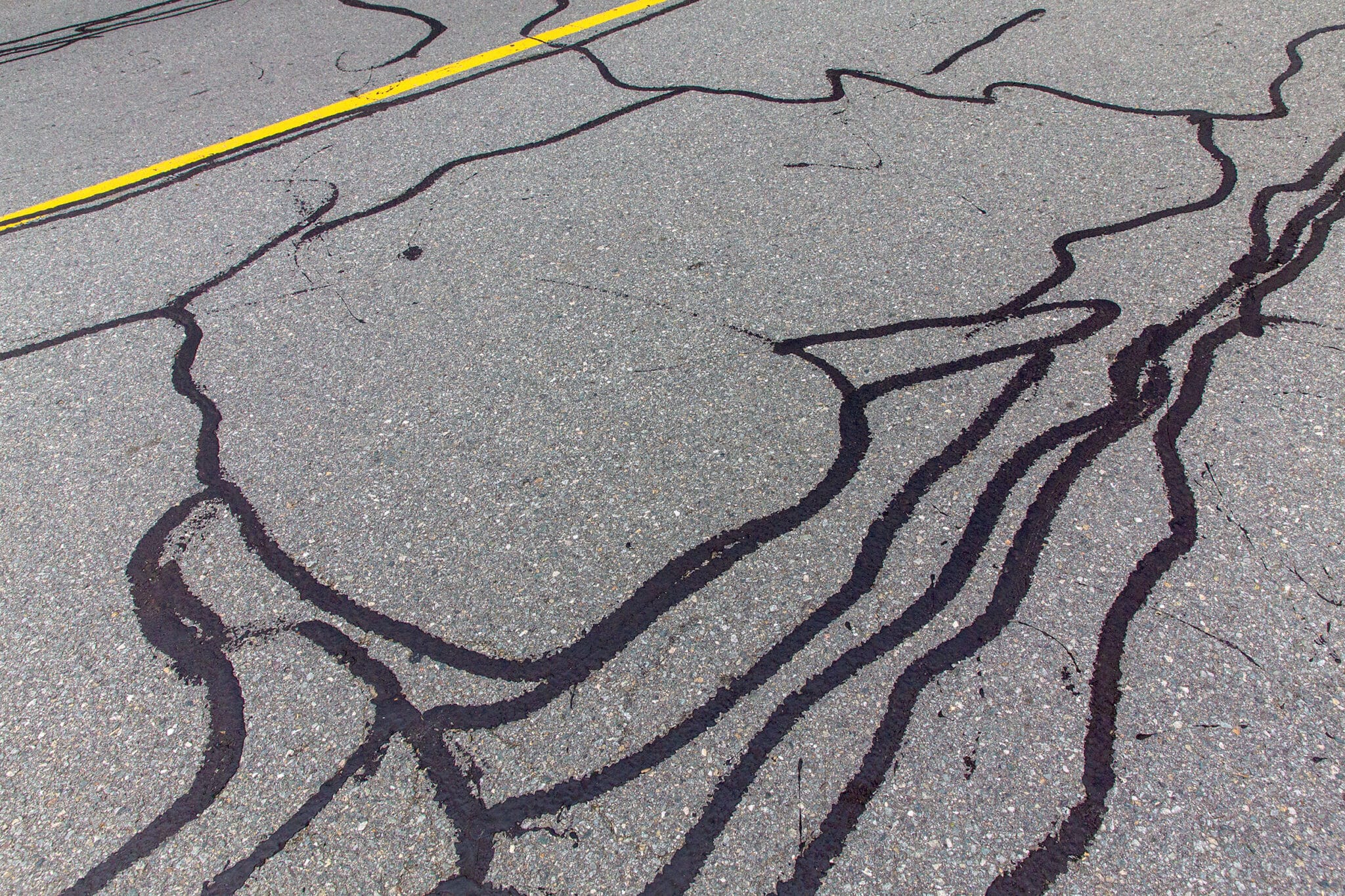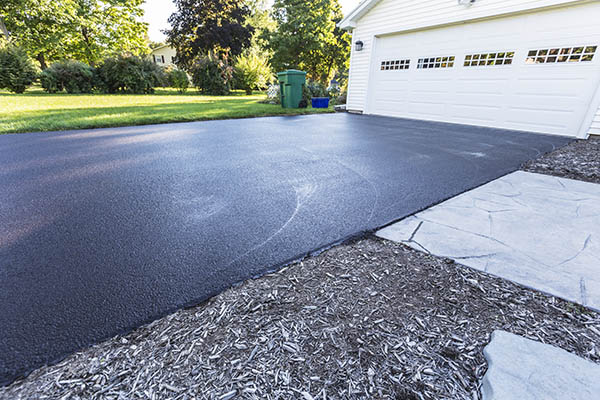Unlock the Keys of Asphalt Sealing: Optimizing Hot Mix Asphalt Longevity
Unlock the Keys of Asphalt Sealing: Optimizing Hot Mix Asphalt Longevity
Blog Article
Hot Mix Asphalt: A Lasting Option for Sidewalk
Warm Mix Asphalt (HMA) has become a leading lasting selection for sidewalk solutions, offering a myriad of cutting-edge modern technologies and environmental benefits. Its capacity to decrease and reuse materials energy usage presents an engaging situation for its fostering in roadway construction tasks. The long-lasting performance and resilience of HMA make it a recommended option for framework growth. As the need for eco-friendly construction methods expands, exploring the subtleties of HMA's sustainability can supply valuable understandings into the future of pavement options.
Environmental Benefits of Hot Mix Asphalt

Additionally, Warm Mix Asphalt aids to alleviate city warmth island results. Its dark shade absorbs sunlight, lowering the quantity of warmth showed back into the ambience contrasted to lighter-colored pavements. This can decrease ambient temperature levels in metropolitan areas, lowering the need for a/c and inevitably minimizing power intake.
Furthermore, Warm Mix Asphalt adds to improved stormwater administration. Its permeable nature permits water to penetrate the pavement and reenergize groundwater supplies, lowering overflow and the danger of flooding. These ecological advantages make Hot Mix Asphalt a lasting choice for paving roadways and freeways.
Energy Efficiency in HMA Manufacturing
Is power performance an important element in the production of Warm Mix Asphalt (HMA)? Definitely. Energy plays a substantial function in the production of HMA, influencing both expense and ecological sustainability. One key element of power performance in HMA manufacturing is the use of cozy mix asphalt (WMA) modern technologies (commercial parking lot paving). WMA permits the mixing and placement of asphalt at reduced temperature levels contrasted to traditional warm mix asphalt, leading to lowered power consumption throughout production. This procedure not only lowers gas use yet likewise lowers greenhouse gas discharges, making it a much more eco-friendly choice.
Additionally, innovations in plant technologies have led to more energy-efficient HMA production procedures. By enhancing power use in HMA manufacturing, the sector can reduce its carbon footprint while preserving high-grade sidewalk products.
Recyclability of Warm Mix Asphalt
The recyclability of Warm Mix Asphalt (HMA) is an essential aspect of its sustainability and long-term ecological impact. HMA is just one of the most recycled products in the United States, with over 100 million tons of recovered asphalt pavement (RAP) being reused every year in new pavement construction. Reusing HMA supplies a number of ecological advantages, such as lowering the need for virgin products, decreasing energy intake throughout manufacturing, and reducing the amount of waste sent out to landfills.
The procedure of reusing HMA includes milling the existing sidewalk, squashing it into smaller items, and blending it with brand-new accumulation and asphalt binder to produce a recycled mix. Overall, the recyclability of HMA plays a considerable function in promoting lasting techniques within the pavement sector.

Long-Term Efficiency of HMA
Asphalt sidewalks demonstrate longevity and resilience this link over an extensive duration, mirroring the long-lasting efficiency of Warm Mix Asphalt (HMA) Furthermore, advancements in HMA technology, such as the use of polymer-modified binders and warm mix asphalt, have actually further boosted the durability and long life of HMA pavements. By focusing on quality building and upkeep techniques, HMA proceeds to show itself as a lasting and affordable solution for lasting pavement infrastructure.

HMA: Resilience and Sustainability
Demonstrating both Learn More Here durability and sustainability, Hot Mix Asphalt (HMA) has ended up being a keystone in the building of resilient pavement infrastructures - regrading. HMA's durability comes from its capability to stand up to heavy lots, rough weather, and high website traffic volumes, making it a reliable selection for streets, highways, and airport paths. The structure of HMA, which normally includes aggregates, binder, and filler, plays a critical duty in boosting its long life and resistance to deterioration
Additionally, HMA's sustainability hinges on its recyclability and energy-efficient production process. The capacity to recycle recovered asphalt sidewalk (RAP) in new HMA blends reduces the demand for virgin products and lessens the environmental influence of sidewalk building and maintenance. Additionally, the power effectiveness of producing HMA hinges on its reduced mixing temperatures compared to various other sidewalk materials, bring about decreased energy usage and greenhouse gas discharges.
Verdict
To conclude, warm mix asphalt (HMA) provides a sustainable remedy for pavement with its eco-friendly attributes. HMA's recyclability, power efficiency in production, and long-term toughness make it a green option for roadway building and construction. By conserving all-natural sources, decreasing waste, and reducing greenhouse gas exhausts, HMA plays an important role in promoting sustainability in framework development. Its ability to alleviate city heat island effects better emphasizes its value in creating environmentally aware and resilient pavement systems.
HMA is one of the most recycled materials in the United States, with over 100 million heaps of redeemed asphalt sidewalk (RAP) being reused each year in content new pavement building and construction.The procedure of reusing HMA entails milling the existing pavement, crushing it into smaller sized items, and blending it with new aggregate and asphalt binder to develop a recycled mix.Asphalt sidewalks show resilience and strength over an extensive period, mirroring the lasting efficiency of Hot Mix Asphalt (HMA) Furthermore, innovations in HMA modern technology, such as the use of polymer-modified binders and warm mix asphalt, have further improved the toughness and long life of HMA sidewalks. The ability to reuse redeemed asphalt sidewalk (RAP) in brand-new HMA blends lowers the demand for virgin products and decreases the ecological effect of pavement construction and upkeep.
Report this page